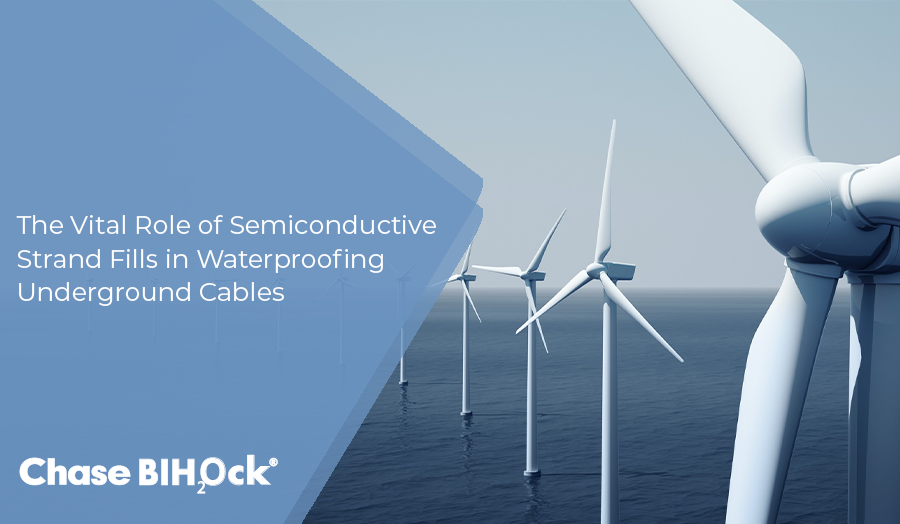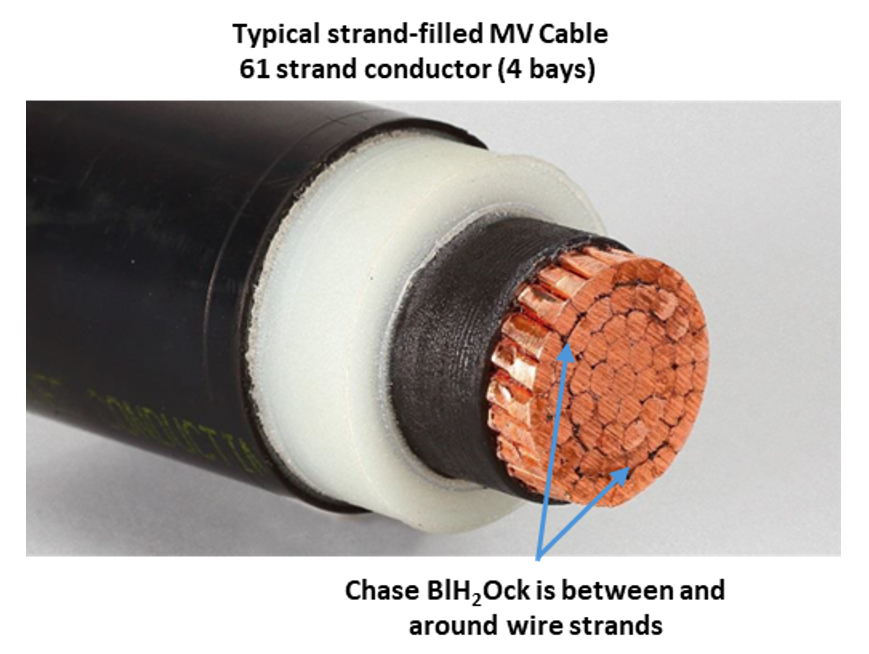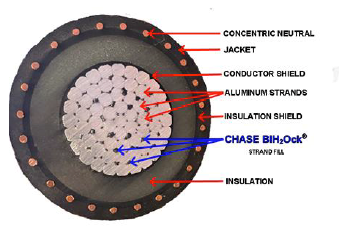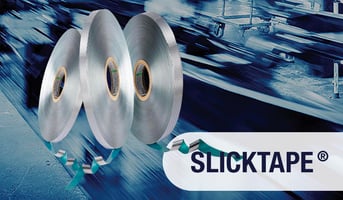Chase BlH2Ock® is a flexible semi-conductive thermoplastic/semi-conductive mastic used for moisture...
The Vital Role of Semiconductive Strand Fills in Waterproofing Underground Cables

Underground cables are used in various applications where the need for reliable and uninterrupted transmission of power and data is critical.
Industries such as electrical power distribution, telecommunications, and data centers (among others) commonly use cables that are exposed and vulnerable to a wide range of environmental challenges. However, “water intrusion” is consistently one of the main concerns.
Water Intrusion in MV Underground Power Distribution Cables
As you can imagine, when moisture penetrates the cable’s protective layers, it can lead to electrical shorts, signal degradation, and cable failure.
The majority of MV cables employ a stranded conductor design. The interstitial space within the stranded conductor design provides a pathway for water/moisture to enter the cable conductor core and then migrate longitudinally along the core during its manufacture, storage, installation, operation, damage, or all the above.
The Role of Semiconductive Strand Fills
Semiconductive Strand fills are used in the cable construction process to fill the interstitial spaces between the individual conductors and insulation layers.
Once in the conductor, the water enters the cable insulation radially by migration through the polymeric conductor shield layer. To eliminate this water ingress and prevent or reduce water-treeing, the interstitial spaces within stranded conductor designs are now “filled” during their manufacture with a material that effectively blocks water/moisture entry into and along the conductor. The material used to block stranded conductors must have the following characteristics:
- impervious to the passage of water or water vapor (humidity)
- physical and electrical properties compatible with MV cable core materials
- possess no adverse effect on the manufacture, installation, operation, or maintenance of the cable
- remain in the stranded conductor throughout the operational life of the cable


In addition, the main benefits of using strand fill water blocking materials are:
- prevent premature cable failure
- increase the cable life cycle
- reduce maintenance costs
Related article: Stop Water Penetration with Water-blocking Materials While Meeting Industry Requirements

Chase BLH2OCK®: The Best Semiconductive Water water-blocking strand Fill solution
Chase BLH2OCK® is a unique pumpable semiconductive strand fill compound with heat stability, low expansion, and consistent melt flow stability.
To meet industry requirements for moisture-blocking agents, the compound is designed to prevent ingress and longitudinal migration of water within the stranded core of power cables.
If Chase BlH2Ock® is properly applied, the cable will meet the water penetration test ICEA T-31-610.
Review our Chase BlH2Ock® Strand Fill Application Guidelines document.
Don’t leave it to chance; leave it to Chase!





